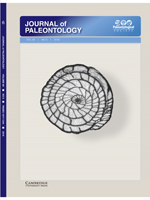Some Silurian-Devonian Argentinian trilobites characterized by infaunal behavior during molting are considered. After a taxonomic reappraisal, a species previously referred to a lineage of the phacopid Paciphacops is proposed as Echidnops taphomimus new species, from the Lower Devonian (probably late Lochkovian) of the Talacasto Formation, Argentine Precordillera. The visual surface of E. taphomimus indicates that a irregular pattern of lens arrangement, typical of early phacopids such as the Ordovician Ormathops, can also be recognized in more derived Devonian relatives, providing new insights on some evolutionary aspects of visual development. Echidnops is recognized in Australia and Argentina, recording an unusual distribution pattern in trilobites from the Lower Devonian of southern South America, otherwise mostly linked to faunas of related Gondwanan, austral circum-polar Devonian basins of the Malvinokaffric Realm. In accordance with proposed increasing predation pressure in the context of the Mid Paleozoic Marine Revolution, evidence indicates that the infaunal molting behavior, as defensive strategy, arose in several trilobite groups during Silurian-Devonian times, rather than in a single endemic lineage of Paciphacops species.
How to translate text using browser tools
1 November 2016
The phacopid trilobite Echidnops taphomimus n. sp. from the Lower Devonian of Argentina: Insights into infaunal molting, eye architecture and geographic distribution
Juan José Rustán,
Diego Balseiro
ACCESS THE FULL ARTICLE

Journal of Paleontology
Vol. 90 • No. 6
November 2016
Vol. 90 • No. 6
November 2016




